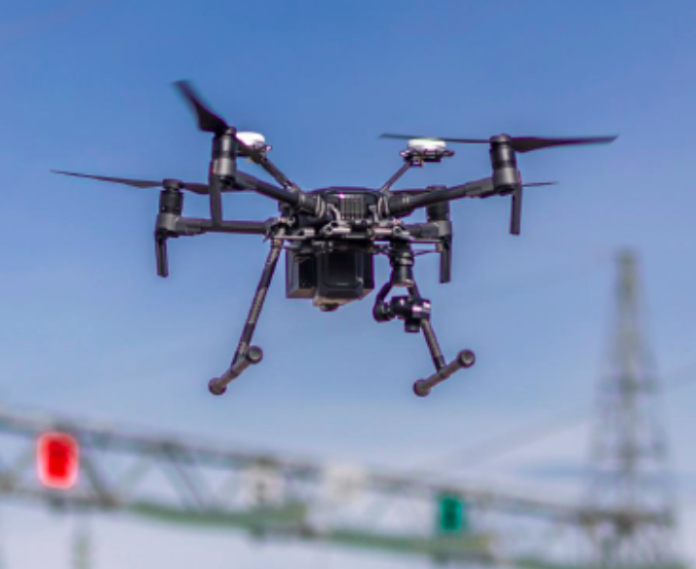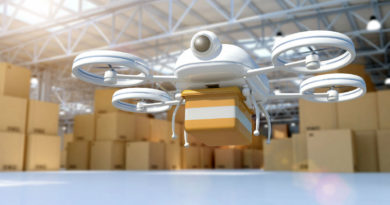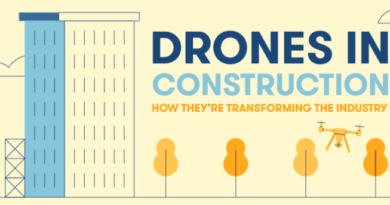Here’s How You Can Implement Drones Into Commercial Operations
![]()
The popularity of drones or unmanned aerial vehicles (UAV) has exploded in the consumer market. Many are using them for recreation and entertainment, and you’ll notice a lot of the consumer-grade drones have built-in cameras and smart controls to accommodate this.
While they certainly can offer a lot of fun, there’s a more professional side to the technology that is creeping throughout the world of business. In fact, several enterprises have taken to using them for a wide variety of things.
In construction, for example, they can help speed up and improve site surveys. In agriculture, they can be used to monitor and maintain crops. In retail, they can even be used to make deliveries and package drop-offs like Amazon’s Prime Air program.
But there are many other uses for the technology. Here are five real-world applications you can take inspiration from.
- 1. Drones-as-a-Service
Enterprise and commercial drones tend to be much more expensive because they’re outfitted with advanced hardware. They must endure harsh conditions and longer work sessions, so they tend to be more durable and have longer-lasting batteries.
Because of this, it could be well outside a company’s budget to purchase a whole fleet of drones. That’s why some providers, like Measure, are offering “turnkey drone solutions” that provide entrepreneurs and enterprises with outsourced equipment at a minimal cost.
While this isn’t necessarily a specific use or application of the technology, it still fits because it’s a whole new form of business — renting out or supplying drones to those who need them. Imagine small and medium-sized companies suddenly having access to this technology thanks to more affordable solutions.
- 2. Emergency Services
In emergency response situations, remote access can be almost necessary in some cases. During a flood or major forest fire, for instance, responders need eyes on the dangerous areas but can’t always venture in themselves. Drones can be used in their stead, not just to monitor from afar but also to take action.
They can do things like deliver medical supplies to anyone stranded, communicate with them or even provide care. Dr. Italo Subbarao, senior associate dean at the William Carey University College of Osteopathic Medicine, is working on a program that would allow drones to deliver “telemedical packages” to those in need. The package would include medical equipment to fix ailments, but also a quick connection to professionals affording them “real medical intervention capabilities” that could save lives.
- 3. Agriculture
As a whole, drones can be used to survey crops and improve yield. One grower, for instance, deploys UAVs to assess the number of tomato plants growing in their field, and will then compare it to what they planted. It improves accountability, but also earned profits as the farmers can more accurately bill for the supplies they’re providing their buyers. In this way, you can see the technology is mostly used to track and measure various performance stats regarding crops and yield.
- 4. Military
Avoiding the more obvious use of drones as a remote weapon, they serve as excellent reconnaissance tech for military use, especially since they can survey an area without a pilot present. If the drone is attacked or shot down while flying over enemy territory, there’s no risk to allied lives — just a whole lot of money going up in smoke.
They can also be used to assist in more mundane operations, such as transporting or carrying goods, assessing damage to military buildings and communication equipment, relaying radio or video communications and finding hidden people and objects through thermal imaging.
Soldiers and front-line fighters may even be adding nano-drones to their personal arsenal, which would allow them to quickly survey and map out their surroundings during events or missions.
- 5. Construction
UAVs can be used in construction for a great many things like planning and organizing the workforce on a job site, assessing new project areas, and even transporting goods and supplies to workers who spend their time high off the ground. Collecting geographic information science or GIS data is another area where they can offer a ton of support. It involves surveying or mapping out particular project areas, be it for new construction, maintenance or something else.
One of the more unique applications syncs up modern architecture and development processes. Architects often build a 3D render or model of the structure they’re working on. In the past, this model was kept separate from a work site with only minimal projections. Now, drones can capture highly-detailed aerial shots of a site, which can then be taken and augmented, so the 3D render or model is shown.
This presents a much more realistic and actionable model of a structure in its natural elements. Architects and site managers can then take that model and make more accurate adjustments throughout the scope of a project.
Endless Opportunity
Of course, the applications mentioned here are nothing more than a fraction of what we can achieve with the technology or how we’re currently using it. Other potential industries include retail and ecommerce, medical and transportation. The scope of opportunity is truly limitless.
Guest post by Megan Ray Nichols
https://schooledbyscience.com/
Megan Ray Nichols is a freelance writer and the editor of Schooled By Science.



